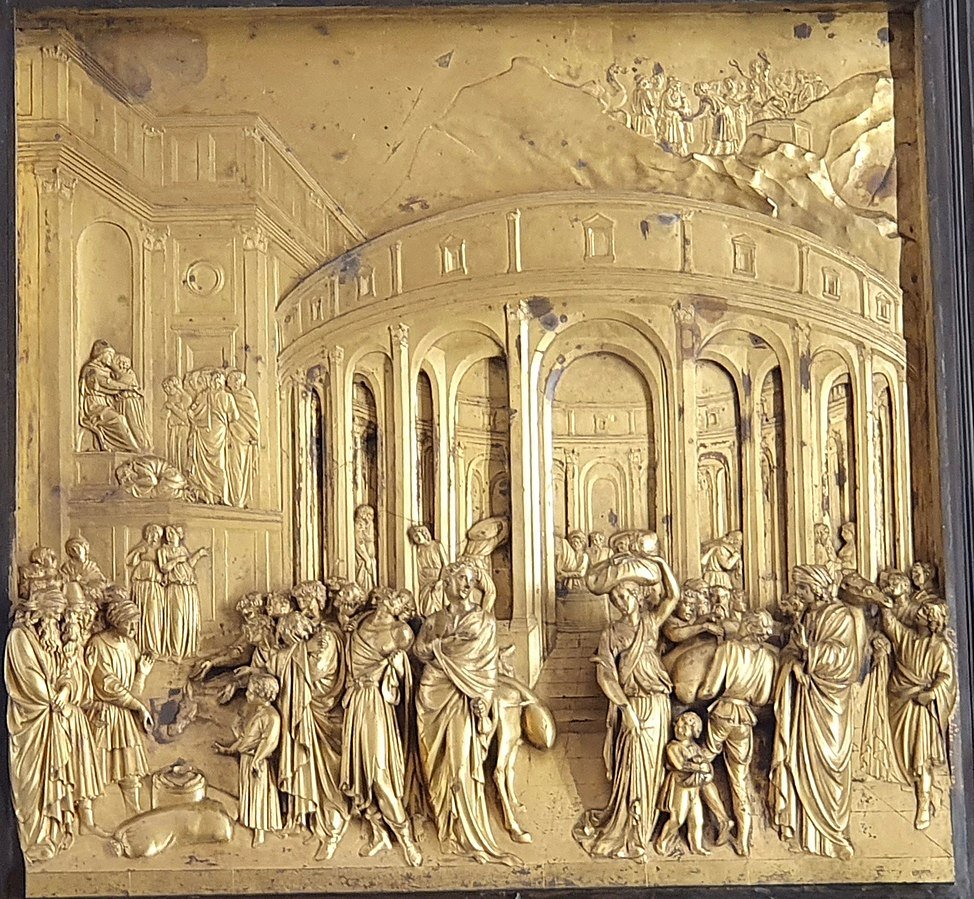We are now in the Octave of Easter. This is, in effect, eight days of Eighth Days, the Eighth Day of Creation being the life, death, and resurrection of Christ, celebrated on Easter Day, for a period of Eight Days that begin on this day, and then every eighth day thereafter through the year on Sunday.
This design, which I think summarizes this pattern of interconnecting octaves visually so well is from the cover of an Arabic language Bible from the 14th century.
There are so many facets of this central feast that one could dwell upon of course, but I want to pick up on one theme of the drama of Easter which was prompted by a recent visit to the campus of Stamford University in California. I went to see the sculpture garden dedicated to the work of the French artist, Rodin.
At its center are his giant work, the Gates of Hell.
These are giant doors cast in bronze - there are a number of casts around the world - and are in fact a single piece of metal. The gates do not open. The weight and immobility of the doors struck me as appropriate in that it suggests a state of permanence for those who are inside.
This, of course, is no barrier to Christ, who went down to Hades, as commemorated in this season, and effortlessly knocked down the doors as shown in Fra Angelico's Harrowing of Hell. I love the fact that what might to us be a task beyond human strength is achieved by the flick of his little finger by Christ.
While the Rodin doors are impressive, it is difficult to know what we are looking at. People are not named and in all honesty, if I was not told the title of this work I would not guess what it is depicting. Commentaries say that it was inspired by Dante's Inferno, but that Rodin decided not to follow its contents directly for his schema. As far as I have been able to ascertain he didn't tell us what this was. This is good for art history scholars who can earn credit by speculating intelligently on what Rodin intended, or art critics who are at liberty to disregard what Rodin intended and suggest their own ideas, but it is not good from a Christian perspective. Christian art should be pretty much self-explanatory. The goal is to reveal the truth, not to hide it by requiring us to guess its meaning by having to interpret cryptic clues. While interpretation might require some prior knowledge of Christian symbols this should be minimal so that most Christians who look at it would know what they are seeing. I am assuming that Rodin's intentions were Christian, given the inspirations cited and looking at his biography it seems he was a man of faith who even considered joining a religious order in France as a young man. Given the quality of the work, it is shame we do not know more about the content of this with certainty. So, note to artists - tell us what you creating or at least name it in such a way that we can tell!
So while there is a sense, from observing his famous sculpture The Thinker at the top, that we are looking at something profound, I do not know precisely what those profundities are. There is something marvelous about the combination of scale and intricate detail as the swooping and diving figures emerge or recede into the plane and overall the composition does seem balanced, but, I have to say, to what end?
The composition is evocative of Ghiberti's sculpted doors to the Baptistry in Florence, completed in the early 15th century and named by Michelangelo as Gates of Paradise. These depict 10 Old Testament scenes and in contrast to Rodin's the content is well established. This makes it of far highly value as an object of Christian contemplation.
St Joseph at the Gates of Paradise










